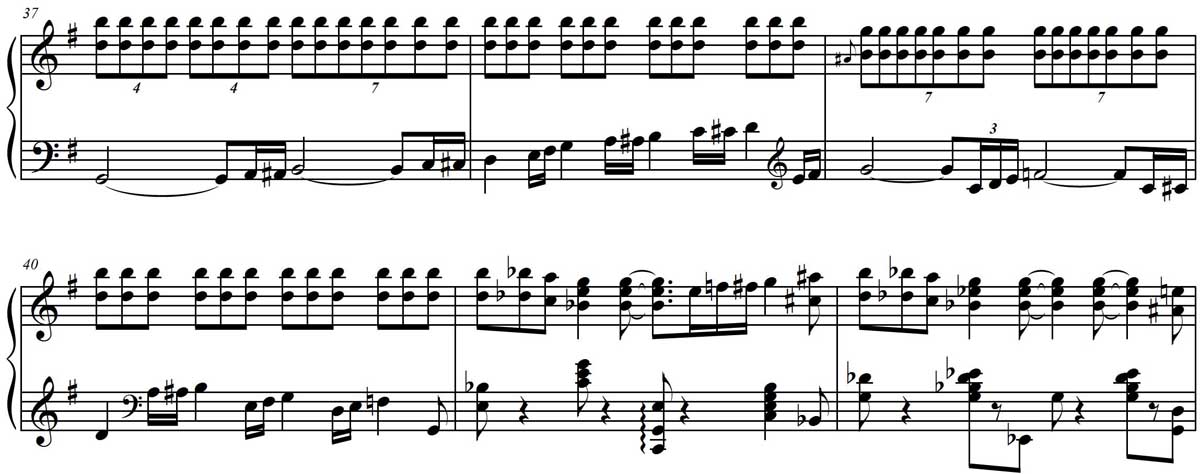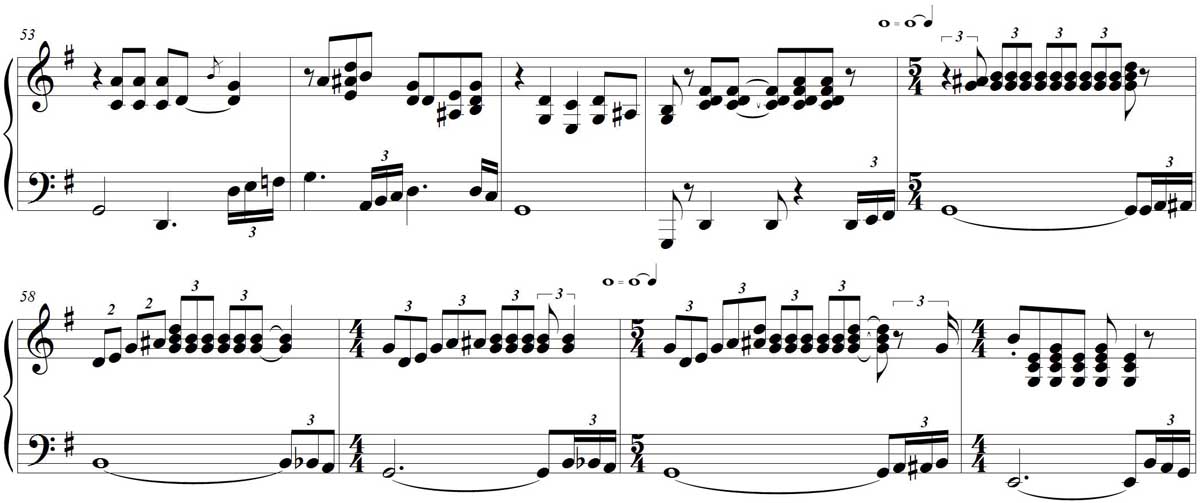At first glance Hersal Thomas seems joined at the hip to his older brother George, but in reality Hersal was quite a different sort of musician. He was more thoroughly a blues artist and did not share his brother’s eclectic leanings. Hersal was also significantly younger and so did not have George’s roots in ragtime. He did not write nearly as many compositions, Hersal’s only sheet music credit being The Fives, as co-writer with George, although Hersal is the composer of his two solo recordings: Suitcase Blues and Hersal Blues. Finally, Hersal was a more brilliant and gifted pianist and showed great promise in his solos and accompaniments before his early death.
One credit that Hersal has been given which is incorrect is as the performer on the piano roll of The Fives. As a Kimball roll it was hand-punched and so could not have been played by Hersal. We are certain that Hersal did perform The Fives but we have no way of knowing how he played it. Hersal’s performing style is based on the blues but ranges from South Side Chicago, such as his piano roll of Underworld Blues, to a more low-down blues in his brilliant accompaniment to Devil Dance Blues by his sister, Sippie Wallace.
Hersal Thomas’s best-known piece is Suitcase Blues, but that is known today primarily from the later recording by Albert Ammons. Ammons maintains a constant eight-to-the-bar pulse throughout his rendition, in a semi-boogie style. Hersal’s original, by contrast, has a more varied accompaniment and appears to be a mix of Texas and Chicago styles. The recording of Suitcase Blues is roughly in two sections, which we’ll label as verse and chorus. The verse is in typical South Side Chicago style with an accompaniment that alternates between the undulating bass first seen in James P. Johnson’s Arkansas Blues, a standing bass, and the typical stride/ragtime bass. The main idea of the chorus, however, is pounded right-hand chords in barrelhouse style, and a melodic bass featuring clusters of grace notes.

This idea appears to be southern in origin and possibly dates from Hersal’s formative years in Houston, Texas. One reason for reaching this conclusion is that the chorus, but not the verse, of Suitcase Blues shows up in a later recording by the Texas artist Conish ‘Pine Top’ Burks.
However, a rendition of both verse and chorus of Suitcase Blues appears as a duet by Texans Bernice Edwards and Black Boy Shine.
This suggests that perhaps Edwards and Shine learned Suitcase Blues from Hersal’s recording. Such “cross-fertilization” by the dissemination of records among the African-American community across the country makes it more difficult to track regional influences. However, in this case we have other examples from southern pianists to turn to. The left hand melody with grace note clusters from the chorus accompanied with the pounded right-hand chords shows up in various forms in recordings like Will Ezell’s Barrel House Man, 44 Blues by Roosevelt Sykes, and Vicksburg Blues by ‘Little Brother’ Montgomery.

Hersal Thomas’s solo recordings can be found on Texas Piano 1 from Document Records, as well as Bernice Edwards’s recordings with Black Boy Shine. Some of Hersal Thomas’s accompaniments are on Sippie Wallace Vol. 1 (1923-1925) and Sippie Wallace Vol. 2 (1925-1945), both from Document Records.